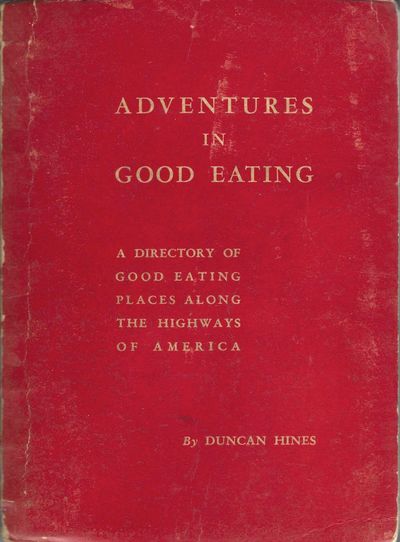![High Living: Recipes from Southern Climes. Compiled by L. L. McLaren. Preface by Edward H. Hamilton and Decorations by W.S. Wright. Published for the Benefit of The Telegraph Hill Neighborhood Association [by]..](https://rarebookinsider.com/wp-content/uploads/2024/03/1586959330.0.l.jpg)
[Telegraph Hill Neighborhood Association]; [Linie Loyall McLaren]
San Francisco, Cal, 1907
San Francisco, Cal: Paul Elder & Company; [Printed at the Tomoyé Press], 1907. Squarish octavo (21.5 x 17 cm.), 58, [3] pages. Illustrated; printed throughout in green and black. Index. ~ SECOND EDITION. This second edition appeared in 1907 to raise funds for victims of the 1906 earthquake. An unusual community cookbook, originally published two years prior to San Francisco's Great Earthquake and Fire of 1906, on behalf of a neighborhood atop one of the city's original seven hills. The one hundred seventy recipes within are drawn chiefly from the kitchens of immigrants "from far-flung lands who live upon the Hill" and include: Pimiento Bisque, Canape Lorenzo (with shallots and crabmeat), Escabeche (a boiled whitefish garnished with orange), Fish à la Guaymas (with sweet red peppers), Eggs à l'Ardenaise (with chives and thick cream), Oysters and Potatoes, Ripe Olive Salad, Estofado de Cordero, Chanfaina of Liver, Kidneys Los Angeles, Blanquette of Turkey, Chicken à la Bordeaux (in a bacon blanket), Ajiaco (Peruvian peppers), Artichokes à l'Inferno, Stuffed Squash, Baked Bananas, San Jose Prune Pudding, Apricot Bisque, Piepiele (sweet potatoes with cocoanut), Marrons à la Roma, Jessina Sultana, Turkish Sherbet. ~ Caroline Loyall "Linie" Ashe McLaren (1863-1941) and her husband Norman, a legal accountant of British birth, were well-known in social circles of San Mateo County. Edward Hamilton, a newspaperman (and son of the controversial preacher Laurentine Hamilton of Oakland), had been recruited by William Randolph Hearst to write for the San Francisco Examiner. His preface waxes nostalgically of the ruminants for which the Goat Hill neighborhood had been known before the construction of a semaphore telegraph there. Elsewhere he invokes the women of the Neighborhood Association who chose to tend these creatures rather than to "the flower bordered paths, hearing the lark sing and stringing the daisy chains." Another personality certain to attract attention was the cartoonist and decorative designer William Spencer Wright, who studied and worked as an in-house designer for Paul Elder between 1896 and 1906, and was among the bohemian artists and writers famously hired to decorate the walls of Coppa's Restaurant (images of which survive only in photographs, the originals lost in the conflagration that followed the 1906 earthquake). ~ In publisher's decorated red and green stiff wrappers (the 1904 original was in cloth); wrappers are quite edgeworn, and a bit stained; lacking a 3 cm. piece of the wrapper at the base of the spine. Better than good. [OCLC locates thirty-two copies of the 1907 edition; Cook, pages 28, 30; Brown 62, 76; Cagle (second edition) 507].

[Hotel St. Francis (San Francisco, Calif.)]. [Victor Hirtzler]
Chicago, Il, 1919
Chicago, Il: Published by The Hotel Monthly Press, John Willy, Inc, 1919. Large octavo (26 x 17.5 cm.), [iv], 432, [iv] pages. Photographic portrait of the author in chef's whites and smoking cap (frontispiece). Publisher's advertisements. Indexes. ~ Evident FIRST EDITION. A handsome reminting of selected material originally presented in the author's Hotel St. Francis Book of Recipes and Model Menus: L'Art culinaire of 1910, an important and influential professional cookbook that marked San Francisco's emergence as a world culinary center; includes, too, a sampling of menu files for corporate banquets and luncheons catered by the kitchen staff of St. Francis between 1915 and 1919 (that is, after the publication of L'Art culinaire). Composed as a series of menus, ordered according to the calendar year, at the head of each page, followed beneath by recipes - some detailed, some perfunctory - for selected items from the menus. The scope may be reasonably described as considerable. That the general index lists two hundred named recipes alone for preparing eggs conveys some idea of Hirtzler's manifestly irrepressible capacity for invention. ~ It is useful to remember that, a century and more ago, many of the compilers of local cookery books could claim intellectual ownership of what they published only by stretching the notion of authorship beyond all recognition. Maids and cooks were the relevant repositories of knowledge and disseminators of practice. And when the privileged class traveled - sometimes staying in one place for weeks, months, or seasons - hospitality service was, for all intents and purposes, an elaboration of home. Staff, including those supervising the great hotel and resort dining rooms of the age, were servants. Chefs may have been well regarded, even fêted, but today it is easy to forget that, in yesterday's world, the road to celebrity was paved by servitude. ~ But their cookbooks were the expression of their own authorial voices. In this they must be counted as unrepresentative of early cookbook publishing broadly, however much their intricate arrangements garner attention. They may nonetheless be representative of place, revelatory of both the preferences of a community and of the extensive apparatus built to satisfy it. ~ The bibliographer Dan Strehl identified the Alsatian Victor Hirtzler (1874-1931) some time ago (in One Hundred Books on California Food & Wine [Los Angeles: The Book Collectors, 1990], page 21.) as "one of the earliest celebrity chefs." Among other means of attracting restaurant clientele, "Hirtzler presented seasonal menus demonstrating the highly sophisticated hotel dining of the time," with menus heavily influenced by the haute cuisine of European royal courts. After a sidereal career that included posts at the Winter Palace in St. Petersburg and the royal Belém Palace in Lisbon, he had arrived at the St. Francis on Union Square in 1904, endured the catastrophes of 1906, and remained after the city's rebuilding until 1925, when he retired to Strasbourg. (A fuller account is available in David Shields's The Culinarians [Chicago: University of Chicago Press, 2017], pages 526-529.) Thus it would not be far off the mark to describe the Hotel Monthly Press edition published in Chicago as a sort of monument or Gesamtausgabe honoring the career and achievement of an admired artist.
~ Internally a bit dusty, but otherwise clean and sound. In publisher's green cloth, lettered and bordered in gilt; wear to head and foot of spine and to corners, spotting to the boards, otherwise very good. [OCLC locates ninety copies; Bitting, page 231; Brown 843; Cagle 363; not in Stoner].

[Menu - Death Valley Mining]; Montgomery-Shoshone Mine (Death Valley, Nevada)
[Bullfrog, Nye County, Nevada], 1905
[Bullfrog, Nye County, Nevada], 1905. Two broadsheet menus (26 x 13.5 cm.), [1] page, each. Illustrated. Two holiday menus, for Thanksgiving and Christmas of 1905, from the height of the Nevada Gold Rush. The Christmas menu, assembled by Robert Brogelman, Chef, included Blue Point Oysters, Mock Turtle Soup, Lobster Mayonaise, Oyster Fritters, English Plum Pudding, Malaga Grapes, Hennesy 3 Star Brandy, and Josyni Key West Cigars. The Thanksgiving menu included Roast Young Turkey, a la Malcolm MacDonald, Pumpkin Pie, and a Manhattan Cocktail. The Montgomery-Shoshone Mine was a Death Valley gold and silver site discovered in 1904 and in operation by 1905, the year of these Thanksgiving and Christmas celebrations. In April of the same year, the Salt Lake Mining Review declared "the story of ... the Mine's company's property at Bullfrog, Nevada is so incredible that the bare facts seem clear out of the range of possibilities" (page 8). In June of the same year, the LA Times reported there were 1300 head of horses and mules on the Bullfrog-Las Vegas hauling freight. These holiday dinners were offered by the founder of the mine, the already ridiculously wealthy Mr. E.A. Montgomery, and his major partner Malcolm L. MacDonald. A year later, the mine was sold to Charles Schwab (the steel magnate, not the financier), Bullfrog was the definition of a boom town, Within a year of the original discovery, 10,000 people sought gold and pleasure there. "The town citizens had an active social life including baseball games, dances, basket socials, whist parties, tennis, a symphony, Sunday school picnics, basketball games, Saturday night variety shows at the opera house, and pool tournaments. In 1906 Countess Morajeski opened the Alaska Glacier Ice Cream Parlor to the delight of the local citizenry. That same year an enterprising miner, Tom T. Kelly, built a Bottle House out of 50,000 beer and liquor bottles" (nps.gov "Rhyolite Ghost Town"). By 1908, mine productivity was dwindling, and by March, 1911, the mine was shut. The Thanksgiving menu has some small grease stains, and tape repairs to the verso at two folds. The Christmas menu has one short tape repair to the edge. Still, near very good, and a rare survival from the apex moment of a town that last little more than six years.

[Etiquette - Napkin Folding; Anonymous]
London, 1891
London: Newton and Eskell, 59 & 60, Chancery Lane, 1891. Quarto in stiff, paper-covered boards (28 x 21.7 cm.), 103, [3] pages. Illustrated. Publisher's advertisements. Title from cover. FIRST & ONLY EDITION. An instructional work on Victorian napkin folding, with facing text and illustrations for forty-nine individual designs including the Fleur-de-Lis, the Tottie, the Dart Heel, the Yacht, Sugar Tongs, the Cinderella, the Prince of Wales' Feathers, and the Opera Glasses. The introduction insists that when entertaining, "the whole table may be spoiled by the napkins and their folding." Proper napkin folding "...requires practice, deftness, delicate fingering, and clean hands..." Internally sound and clean, but for a bit of light foxing. Printed paper-covered boards, over dark green, pebbled cloth. Some light wear to edges; general soil to the boards. Near very good. Small, early ownership ink stamp to front paste-down, "Claude Folley, Stweard". Rare. [OCLC locates one copy (BL)].

Caron, Pierre (Mrs. Frederic Sherman, translator and editor)
New York, 1885
New York: D. Appleton & Company, 1885. Octavo (18 x 12.5 cm.), 231, [8] pages. Index, really a Table of Contents. Publisher's advertisements. FIRST EDITION. A collection of classic French dishes with recipes by a former Chef d'Entremets at Delmonico's. Soups, sauces, fish, entreés, vegetables, etc. Internally fine, with all edges colored orange. This book was quite popular and went through a number of printings in the years following its issuance in 1885. Spine of decorated tan cloth is a darkened and scuffed and rubbed at the head of the spine, otherwise very good. [OCLC locates twenty-two copies; Bitting page 77; not in Cagle].
![A Guide to Modern Cookery. [inscribed]](data:image/gif;base64,R0lGODlhAQABAAAAACH5BAEKAAEALAAAAAABAAEAAAICTAEAOw==)
Escoffier, A [George Auguste]
London, 1909
London: William Heinemann; [Richard Clay & Sons Ltd.], 1909. Thick quarto (24.5 x 16 cm.), xvi, 880 pages. All edges green. Publisher's advertisements; index. Second, "New and Revised Edition". The first English language edition was issued in 1907. An early issue of the first English language translation of Escoffier's masterwork, which built on the work of Careme while simplifying and codifying French haute cuisine. One of the most influential cookbooks of all time. Escoffier's efforts to professionalize and discipline the kitchen served to raise the job of cooks to a respected profession. In an introduction to the 2011 translation of the Guide, Heston Blumenthal writes, "We eat as we eat because of Auguste. Escoffier's precision and invention inform every page of his Guide. He said he wanted the book to be 'a useful tool rather than just a recipe book' and that is exactly what it is." ~ Some foxing throughout text block; rear free endpaper lacking. In publisher's green, gilt-titled cloth, faded, lightly soiled, rubbed at edges, and with a one-inch tear to the cloth at the foot of the rear joint. Better than good, but not quite very good. A preliminary blank contains the author's presentation inscription, "a Madame Hunt, Hommage respecteuse, A. Escoffier, London 10 Janvier, 1911". "Madame Hunt" was Alice Hunt, born Alice St. John Nolan, and wife of one of the foremost neurologists of the early twentieth century, James Ramsay Hunt. Signed copies of Escoffier's great work, in any edition, are rare.

[Walter Baker & Company (Dorchester, Mass.)]
Dorchester, Mass.; Boston, 1880
Dorchester, Mass.; Boston: Walter Baker and Company; Alfred Mudge & Sons, Printer, 1880. Booklet (14 x 11 cm.), 40 pages. Title and publication information from wrapper. Publication date based on statement on page 40 "Manufacturers of cocoa and chocolate for one hundred years" and statement on front cover "Established 1780." FIRST EDITION. The first cookbook and second book of any sort produced by Walter Baker & Company. This is earlier than and distinct from a later booklet with the title Chocolate Recipes, published in 1899, with Maria Parloa and Miss Elizabeth K. Burr as the authors. Within Chocolate Receipts, Christoph Wilhelm Hufeland, a German physician, is quoted: "I recommend good chocolate to nervous, excitable persons; also to the weak, debilitated and infirm; to children and women. I have obtained excellent results from it in many cases of chronic diseases of the digestive organs." [OCLC locates ten copies; not in Bitting or Cagle].

Fox, Minnie C. [Minerva Carr Fox; Alvin Langdon Coburn (photographs)]
New York, 1904
New York: Fox, Duffield & Company; [Printed by] The Trow Press, 1904. Octavo (19.25 x 13 cm.), xlii, 350 pages. Photographic frontispiece ("The Turbaned Mistress of a Kentucky Kitchen") and twelve additional photographic plates (really eleven, as the list of illustrations counts one plate as two). Detailed table of contents. ~ Evident FIRST EDITION. A community cookbook of sorts, in light of its contributions from forty-six acquaintances of the compiler, though not a charitable fundraiser. With more than five hundred recipes, many of them attributed. Of note among them: Dixie Biscuits, Steam Pone, Buckwheat Cakes, Black Bean Soup, Chestnut Soup, Okra Soup, Roasted Shad, Chicken Aspic with Walnuts, Crême (recte Crème) de Volaille, Xalapa Boudins, Oyster Croquettes, Quail with Truffles, Kentucky Baked Ham, Fried Pig's Feet, Blue Grass Corn Pudding, Eggplant Pudding, Hominy Puffs, Salsify Fritters, Cauliflower Salad, Mushroom Catsup, Burnt Almond Cream, Orange Soufflé, Pistachio Ice Cream, Tapioca and Apples, Blue Grass Plum Cake, Old Virginia Christmas Cake, Bourbon Whisky Punch. ~ Long before The Blue Grass Cook Book appeared, the Fox family had removed over the eastern border to Big Stone Gap, Virginia, but for many years Minerva Worth Carr Fox (1838-1925) had presided over a manor house at Stony Point, in the north-central Kentucky region encompassing Bourbon County that had been delineated as part of the Commonwealth of Virginia as far back as 1785. History remembers her chiefly as the mother of John William Fox, Jr. (1862-1919), a journalist and novelist who documented the social devastation wrought by the cleaving of communities and families in the wake of the Civil War. (Later, too, he served ably as a war correspondent for New York newspapers in Cuba, Japan, and Manchuria.) But food historians value Minnie Fox's anthology for its acknowledgment of the African-American preeminence in the creation, organization, and preservation of what even then had come to be appreciated as "southern cuisine." ~ The tribute is borne initially in John Fox's literary (frankly, precious) introduction, but is then carried off with a minimum of contrivance in the eleven plates by a very young Alvin Langdon Coburn (1882-1966) - the photographer's first series in book form (see Alvin Langdon Coburn, Photographer: An Autobiography, edited by Helmut and Alison Gernsheim [London: Faber & Faber, 1966], page 141), appearing before his sequence of frontispieces for the collected works of Henry James, and before his departure for London, where his portraits of George Bernard Shaw, among many others, would catapult him into the limelight. ~ Some light wear or toning to text block; in publisher's blue cloth, with some light rubbing to edges and darkening to spine, lettered in black. Generally very good. [OCLC locates forty copies; Bitting, page 164; Brown 1124; Axford, page 36; Cagle 270; Van Willigen, page 224].

Weild, John
Boston, 1870
Boston: Published by the Author, 1870. Octavo, (17.5 x 11.5 cm.), 191 pages. Illustrated with an engraved frontispiece portrait of the author. Index. All edges red. FIRST EDITION. A small, thorough guide to baking of all sorts, written by a professional baker, who worked both coasts of Canada, San Francisco, and the Sandwich Islands. The author differentiates the skills of bread baking from those of cake making and pastry, but endeavors to teach it all. With sections on jellies, crackers, ice-cream & water-ices, beyond cakes and bread. Hinges started, but competently reinforced with archival paper tape. Edges of brown cloth boards rubbed and a little chipped. The front board bears a handsome gilt-stamped emblem of two bakers, scales, a sheaf of wheat, and a basket of round loaves. A near very good copy of a scarce baker's manual. Ownership signature of "Mrs. Jas. H. Shaw... Cambridge, Mass." in pencil (twice) to front endpapers. [OCLC locates only four copies; Bitting page 490; not in Cagle].

Eustis, Célestine
New York, 1903
New York: R.H. Russell, 1903. With an introduction by S. Weir Mitchell. Octavo (20.5 x 14 cm.), [4], vii-x, [xi-xii], xiii-xvi, [4], 1-84, [85-86], 87-112, [2], [4], pages. Publisher's advertisements at rear. Illustrated with eight half-tone plates by Harper Pennington, with tissue-guards, each printed with a traditional Creole work song. Text primarily in English with a short section in French. ~ FIRST EDITION.[N.B. two editions of 1903 are recorded: one with 129 pages and pagination errors (cf. Brown & Brown, Culinary Americana 1153), and this ed., with 112, [1] pages of text]. The classic Creole cookbook from Celestine Eustis (1836-1921), daughter of a prominent Louisiana home. Her father was a chief justice and brother a U.S. congressman. Recipes include classics such as Crawfish Bisque, Crab Gumbo, Corn Pone, and Couche Couche. Original illustrated paper covered boards backed in drab cloth. Some staining to boards, wear and fraying at spine ends and corners. Near very good. With the bookplate of Eva Carolyn Barnard to the front paste-down. [Bitting, page 148 (citing a 1904 edition); Brown 1153 (noting an alternate pagination of 129 pages); Cagle 238; Uhler 86].

[Banquet program - Hotel Men's Mutual Benefit Association; Parker House; American House; Hotel Vendome (Boston, Mass.)]
[Boston, 1890
[Boston: Robinson Engraving Co, 1890. Menu, in painted wooden boards, bound with cord (20 x 15.2 cm.), 10 gold-printed leaves, each a die-cut circle printed versos only. An elaborate program of events for the eleventh annual meeting of the Hotel Men's Mutual Benefit Association, held in May, 1890 at Boston's great hotels, the Parker House, Hotel Vendome, and American House. The H.M.M.B.A. was founded in 1879 to offer hotel workers insurance plans; it was later to become the Bankers Life and Casualty Company. The program and menu for the three-day meeting includes the meeting itself, music, speakers, presentations, carriage excursions, etc. The painted wooden boards hold die-cut 'booklets' dedicated to the Convention, headquartered at the Parker House, the Eleventh Annual Banquet, held at the American House, and the Reception, held at the Hotel Vendome. The boards are scored and textured, painted in silver with gold spots, and hold a hand-lettered piece of 'vellum'. Some rubbing to edges of boards, otherwise very good.

Owen, Mrs. De Witt C.; [Ella "Nellie" Upton Leighton Owen]
Dixon, Ill, 1900
Dixon, Ill: Tri-Weekly Star, 1900. Ripley's Sweet Sixteen Series. Booklet, sewn on cord (14 x 10.5 cm.), 12 unnumbered pages. Title from cover; series statement at head of title. Presumed FIRST EDITION. There are two states indicating different printers. The present one, and "Star Job Rooms"; no priority has been established. A lovely privately printed cookbook dedicated to the egg. Despite the title stating "Sixteen Studies" there are seventeen recipes and a page of advice about raw eggs. Another in the series of charming self-published cookbooks produced under the name "Mrs. De Witt C. Owen". The author, Ella "Nellie" Upton Leighton, was born in Steuben, Maine, and adopted into the Leighton family. Her husband, Dewitt Clinton Owen was a newspaperman, owner of Dixon Illinois' Tri-Weekly Star, whose thrice weekly publication schedule was a considered a significant novelty in its day (as per the lead story in Newspaperdom, vol. viii no. 4 (New York, 1899). The cookbook is part of the Ripley's Series of Ten-cent Booklets, for which Owen self-published at least nine titles, and served as publisher and distributor. The significance of the name Ripley in the series title remains a mystery. Printed on pale orange crepe paper. Light dampstain to the upper left corner of wrappers and text block, otherwise fine. [OCLC locates six copies (and one copy listing "Star Job Rooms" as printer/publisher)].

Cary, Elisabeth Luther; Jones, Annie M.
New York, 1904
New York: Rohde & Haskins, 1904. Small octavo (18.5 x 12 cm.), vii, 235 pages. FIRST EDITION. A second edition was published by Moffat, Yard & Co. in 1904. A day book of recipes, with literary quotes and inspirations for recipes for each day of the year. In the preface, the author writes, "In making up this collection of recipes suggested by quotations chiefly from English novelists and poets, our idea has not been to provide Bohemian fare for our readers, or give them unfamiliar and unrelishable diet, but to show what a varied list might be garnished from the works of well-known writers, of dishes most of them equally well-known and all of them good if properly prepared." Handsomely printed for a trade book. Internally near fine; original publisher's black-decorated tan paper covered boards over a red cloth spine. Printed spine label and boards are soiled and rubbed. Near very good. Ink ownership inscription in ink to front free endpaper, and a related card laid-in.

[Simmons, Amelia]; An American Orphan
Poughkeepsie, NY, 1815
Poughkeepsie, NY: Paraclete Potter / P&S Potter, Printers, 1815. 24mo. (14.2 x 9 cm.), iv, [1], [5] 71 pages. The eighth edition of Amelia Simmons' American Cookery, originally issued Hartford, 1796. The book is widely considered to be the first American cookbook, authored by an American and printed and published in the US. Contemporary one-quarter brown calf, with marbled paper over boards; Hinges sound, but calf split on front panel, light foxing throughout; early owner's ink inscription to preliminary leaf. Rare. [OCLC locates sixteen copies of this printing; Bitting, page 435; Shaw and Shoemaker 33843; Lowenstein 68].

Moore, H.F. (1867-1948) (Henry Frank); Pope, Thomas E.B.; United States Bureau of Fisheries
Washington, 1910
Washington: Government Printing Office, 1910. Department of Commerce and Labor, Bureau of Fisheries no. 731. Booklet, stapled in wrappers (25 x 15 cm.), [1] leaf, 52 pages. Illustrated with 8 leaves of plates. Table of contents. FIRST EDITION. A report of various experiments with oyster and bivalve culture in Jefferson, St. Bernard, and Terrebonne Parishes, Louisiana. Some pencil annotations to margins of a few pages. In publisher's titled wrappers. Near very good.

[Trade catalogue - Bar equipment; Superior Products Mfg. Co. Inc. (Minneapolis, Minn.)]
Minneapolis, Minn, 1955
Minneapolis, Minn: the company, 1955. Quarto-sized, booklet in wrappers, in a three-hole brad binding (29 x 22.5 cm.), 249, [4] pages. Illustrated throughout. Printed on various stocks, some illustrated with color, and two leaves at the end with color samples. A sizable trade catalogue from the Minneapolis-based bar supply company, servicing drinking establishments, restaurants, hotels, etc. Sections include direct draw bars, direct draw tap boxes, ice cube makers, refrigeration and refrigerating machinery, reach-in coolers, freeze chests, walk-in coolers, glass washers, glasses, bar rails, fans, faucets, taps, regulators, picnic pumps, keg bumpers, chairs, bar stools, booths, counters, back bars, costumers, sand urns, and more. One of four order blanks at rear has been removed; "received" stamp to title page; small sticker with file number to front panel of wrapper. In textured black wrappers, printed in red, white, and pale blue. Some rubbing to extremities, otherwise very good. [OCLC locates no copies; and one copy of a smaller 1949 catalogue (Hagley Museum)].

Velázquez de León, Josefina; [Academia de Cocina Velázquez de León (Mexico)]
México, D.F., [circa 950s]
México, D.F.: Academia de Cocina Velázquez de León, [circa 950s]. Ediciones Josefina Velázquez de León; Libros de cocina 75. Octavo in wrappers (20 x cm.), 69 pages. index. Text in Spanish. FIRST EDITION. Another of the many publications of Josefina Velzquez de Leon (June 7, 1899 - September 21, 1968). She was a Mexican cook, researcher, writer and teacher. as well as a pioneer of Mexican gastronomy and an entrepreneur of Mexican cuisine. One of the most well-recognized and prolific of all Mexican cookbook authors, she had more than one hundred forty books to her name. The subtitle says it all (my translation), a "selection of authentic recipes from the regional cuisine of Chihuahua, compiled by a group of ladies and gentlemen from the Marian Congregation Established by the Jesuit Fathers of the Church of the Sacred Heart of Jesus in the City of Chihuahua. Augmented with a series of modern recipes that can be made with the good products of the region." Sections include Cocina, Frutas, Dulces, Reposteria, Varios, and Recetas de cocina y reposteria moderna. In illustrated beige and blue paper wrappers titled in black, red, and blue. Some light wear to edges, small light stain to front panel. otherwise very good. Scarce. [OCLC locates eight copies].

Welch, Deshler
New York / Chicago, 1896
New York / Chicago: F. Tennyson Neely, 1896. Octavo (19.3 x 13 cm.), 141, [5] pages. Advertisements. Illustrated. FIRST EDITION. An early example of a cookbook written solely for men outside of the culinary profession. An amusing mixture of recipe collection and narrative stories illustrating the fine life a gentleman can lead with only a chafing dish for cooking. Welch was a literary and theater critic and a regular contributor to Harper's Magazine. Top edge a bit darkened, and some light age-toning to text-block; in publisher's silver, gilt and red-stamped green cloth. Near fine. Presentation inscription on the front free endpaper, "To Mrs. W.B. Perkins, with the compliments of her friend, The Publisher, January 6th, 1896." [Bitting 490; Brown 2532; Cagle 803].
![Le Roquefort [with]: La race d'Aubrac et le Fromage de Laguiole](data:image/gif;base64,R0lGODlhAQABAAAAACH5BAEKAAEALAAAAAABAAEAAAICTAEAOw==)
Marre, Eugène (1867-19xx)
Rodez, 1906
Rodez: E. Carrère, 1906. Two volumes bound as one. Quarto (27 x 20 cm.),(vol. 1.) 200 pages. Illustrated with one folded leaf of plates, and engravings and half-tone photographs in the text. Table of contents. Bibliography; (vol. 2): 119, [1] pages. Engravings and half-tone photographs in the text. Bibliography. Text in French. FIRST EDITION of the Roquefort volume; Second Edition, much enlarged, of d'Aubrac (though the first edition, issued in 1895 was a much slimmer work, at just 25 pages). The suthor describes the natural environment of Aubrac, and then presents the main data on the local cattle breed, including the character, breeding, life in the mountains, and improvement of the breed. In the second part he offers an overview of the cheese of Laguiole (shaped or table cheese) made with milk from Aubrac. Included is material on the history, transport of milk, production, trade etc. Some light foxing to front and end matter, and a bit to the interior. Slight bump to lower right corner of text block, otherwise clean and sound. Bound in speckled, paper-covered boards over dark blue calf faded to brown at the spine. Generally very good. With the bookplate of the Carl Sontheimer Foundation. [OCLC locates sixteen copies of the first work, and eight of the second work in the second edition (and just one of the 1895 first edition)].

[Hines, Duncan]
Chicago, 1937
Chicago: Adventures in Good Eating, Inc.; Printed by E. Raymond Wright, 1937. Metal comb binding (18.5 x 13.5 cm.), 197, [4] pages. Memorandum pages at rear; order form. Third Edition. The famous guide to wayside restaurants developed while the author was a traveling salesman. The guide features highlights of dining, with descriptions of recommended dishes, etc. Hines became so trusted by the public that he later licensed the use of his name to a variety of companies for food products, including the cake mix for which he is most widely known. Some light wear and soiling, a bit shaken, otherwise very good in red and white printed card wrapper. Previous owner's neat name in ink to free front endpaper. About very good. Inscribed on the free front end paper by the author.

Ziemann, Hugo; Mrs. F.L. Gillette [Fanny Lemira Gillette]
Akron, Ohio, 1904
Akron, Ohio: Saalfield Publishing Co, 1904. Thick quarto (25 x 19 cm.), vi, 590, [ii] pages. Illustrated with plates and line drawings in the text and a frontispiece. Publisher's advertisements at rear. Index. "New and Enlarged" Edition; originally issued in 1887. Each edition contained a portrait of various First Ladies and the frontispiece of this volume is a portrait of Edith Carew Roosevelt. Hugo Zeimann is identified as "Steward of the White House" and "one time caterer for that Prince Napoleon who was killed while fighting the Zulus in Africa". Exhibiting some of the age-toning seen in most early editions and the edges of the title-page and preface leaves. In cream colored oil-cloth, titled and decorated in black; some soil and rubbing to edges; hinges sound. Near very good, which is unusual for this title. [Bitting, page 184].
![High Living: Recipes from Southern Climes. Compiled by L. L. McLaren. Preface by Edward H. Hamilton and Decorations by W.S. Wright. Published for the Benefit of The Telegraph Hill Neighborhood Association [by]..](https://rarebookinsider.com/wp-content/uploads/2024/03/1586959330.0.l.jpg)
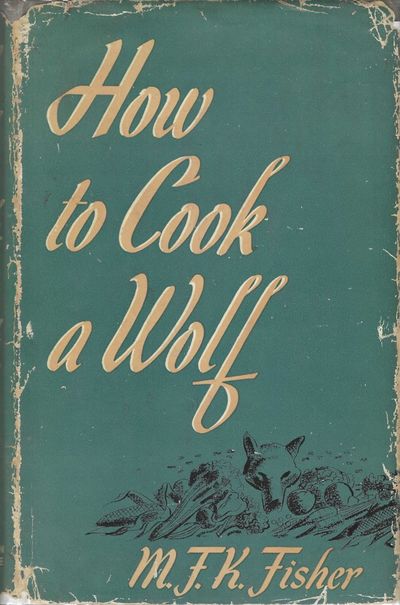
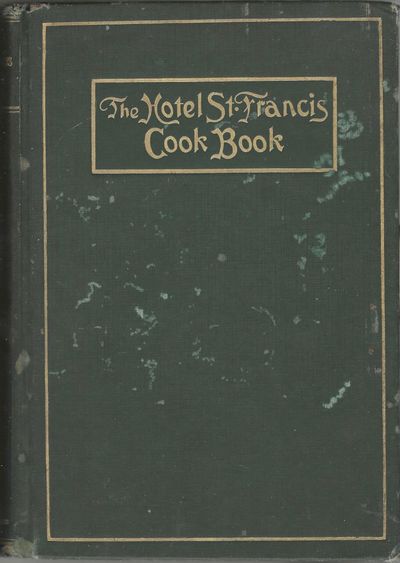

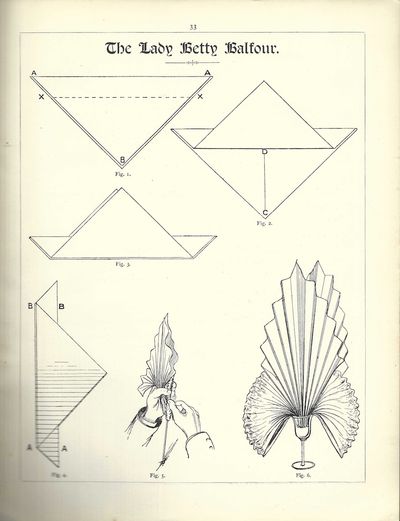

![A Guide to Modern Cookery. [inscribed]](https://rarebookinsider.com/wp-content/uploads/2024/03/1575333195.0.l.jpg)
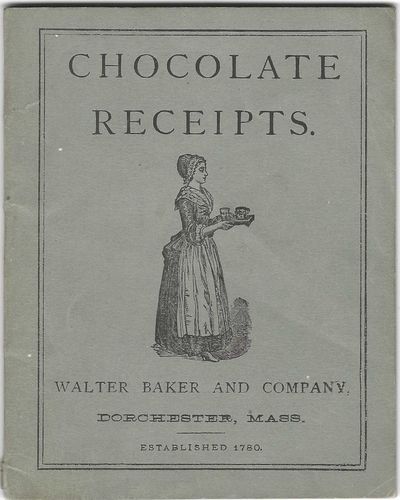
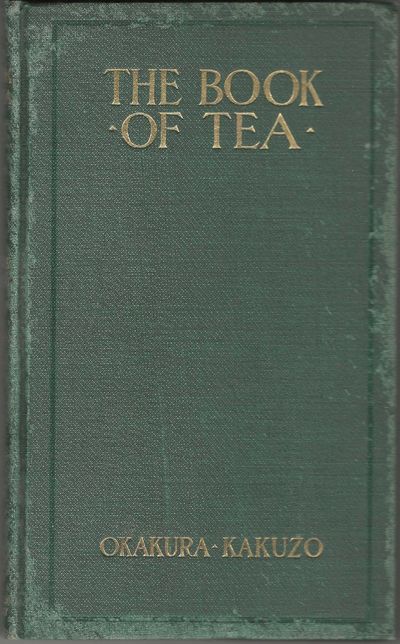

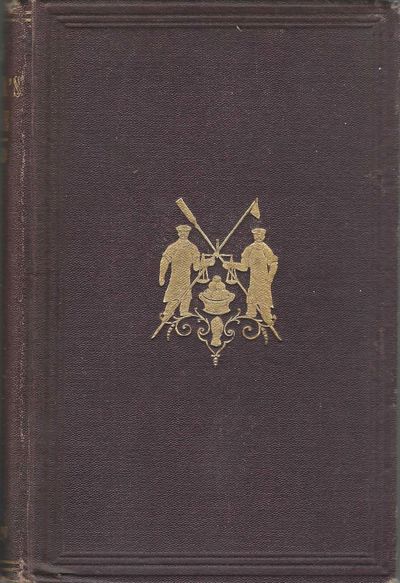
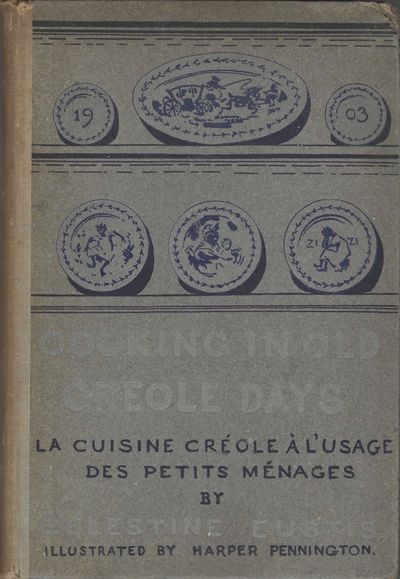
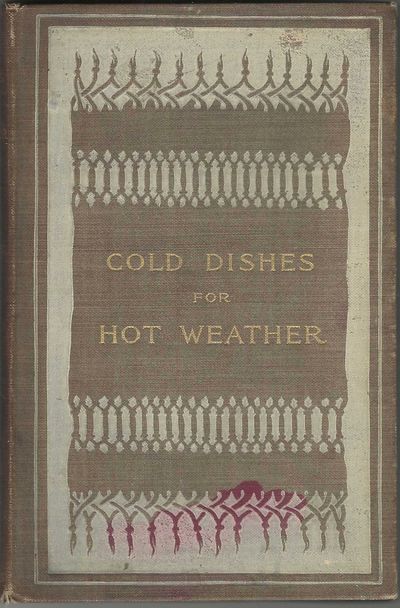

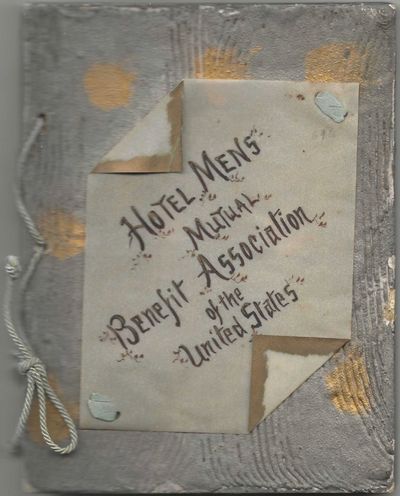
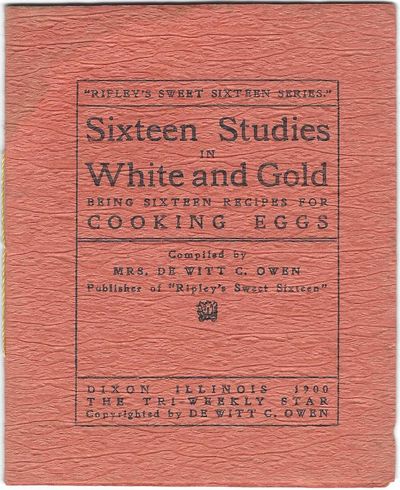

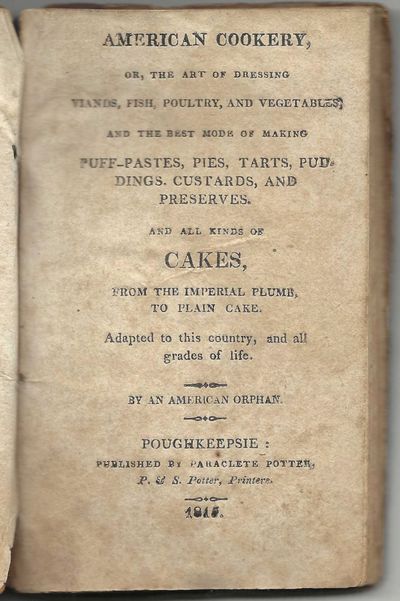
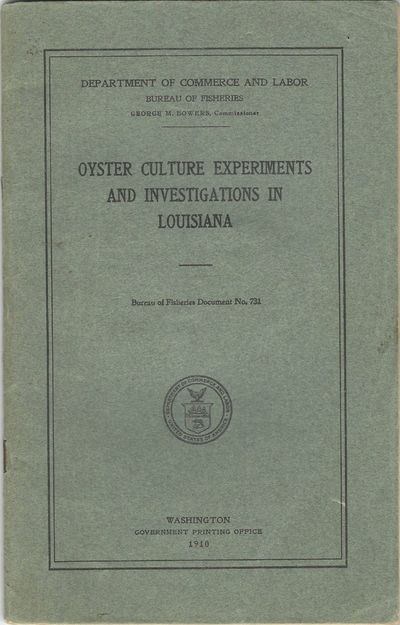


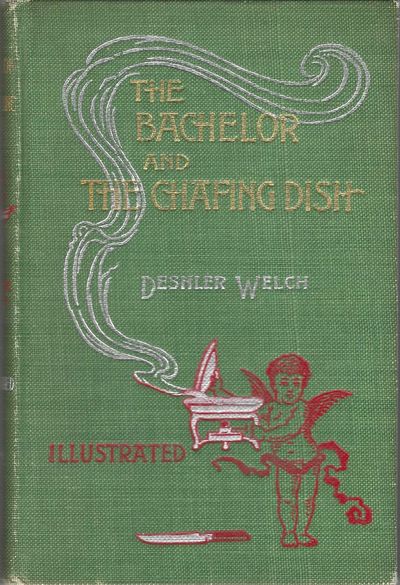
![Le Roquefort [with]: La race d'Aubrac et le Fromage de Laguiole](https://rarebookinsider.com/wp-content/uploads/2024/03/1575299476.0.l.1.jpg)
